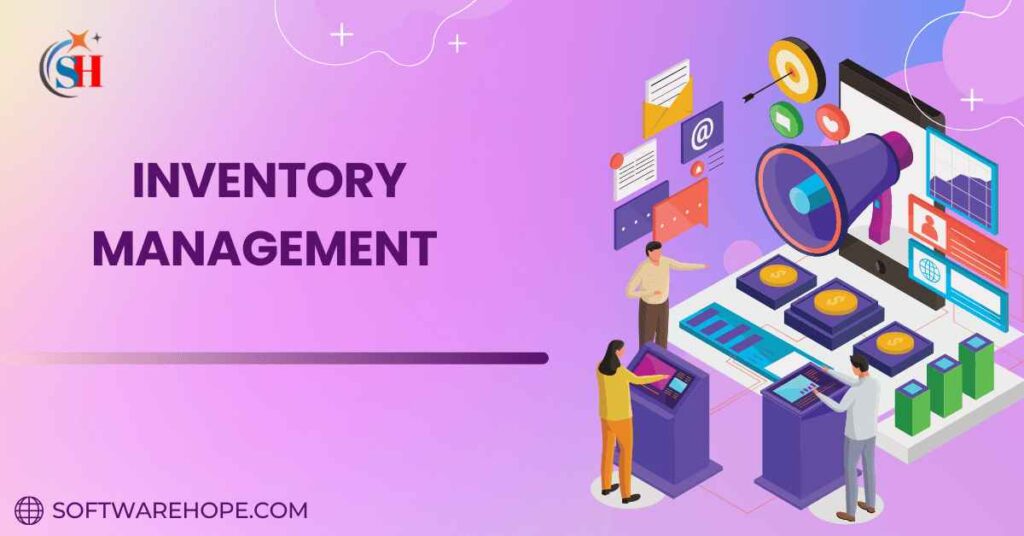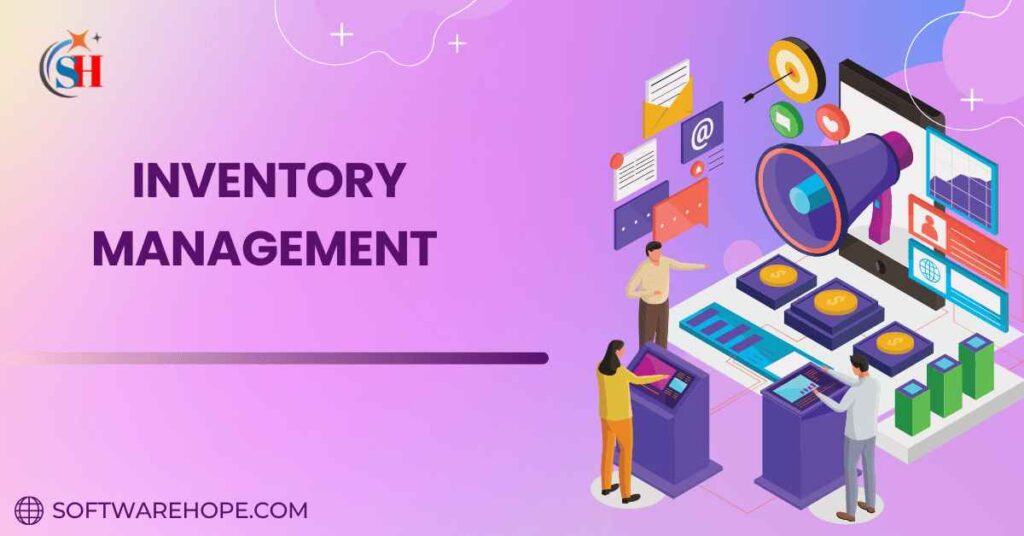
Mastering the Flow: A Comprehensive Guide to Business Inventory Solutions
In the intricate dance of modern commerce, inventory acts as the lifeblood of any product-based business. From raw materials awaiting transformation to finished goods poised for customer hands, efficient management of this asset is not merely an operational task; it’s a strategic imperative that directly impacts profitability, customer satisfaction, and overall business resilience. In today’s fast-paced, interconnected world, the traditional methods of inventory tracking are no longer sufficient. Businesses, regardless of size, are increasingly turning to advanced business inventory solutions to navigate the complexities of supply and demand, optimize costs, and gain a competitive edge.
This comprehensive guide will delve into the critical role of inventory management, explore the challenges businesses face, examine the evolution and types of modern inventory solutions, highlight essential features, outline tangible benefits, provide insights into choosing the right system, and glimpse into the future of inventory control.
The High Stakes: Challenges of Inefficient Inventory Management
Before exploring solutions, it’s crucial to understand the pervasive problems stemming from poor inventory practices. These challenges can erode profits, damage reputations, and stifle growth:
- Overstocking: Holding excessive inventory ties up valuable capital, incurs high carrying costs (warehousing, insurance, security, obsolescence), and increases the risk of product spoilage or obsolescence. It’s capital sitting idle, not generating revenue.
- Understocking/Stockouts: Conversely, insufficient inventory leads to lost sales opportunities, frustrated customers, and potential damage to brand loyalty. It can also disrupt production schedules and necessitate costly rush orders and expedited shipping.
- Data Inaccuracy: Manual tracking or outdated systems are prone to human error, leading to discrepancies between recorded and actual stock levels. This inaccuracy undermines forecasting, purchasing decisions, and overall operational planning.
- Operational Inefficiencies: Manual processes for counting, picking, packing, and shipping are time-consuming, labor-intensive, and susceptible to errors. They reduce productivity and increase operational costs.
- Lack of Visibility: Without a unified view of inventory across all locations (warehouses, retail stores, in-transit), businesses operate in the dark, unable to make informed decisions about stock transfers, reordering, or sales strategies.
- Supply Chain Disruptions: Global events, supplier issues, or unexpected demand shifts can wreak havoc on an unoptimized inventory system, exposing vulnerabilities and causing significant financial losses.
The Evolution of Inventory Management: From Ledgers to AI
Inventory management has come a long way from handwritten ledgers and manual stock takes. The evolution reflects a constant drive for greater accuracy, efficiency, and insight:
- Manual & Spreadsheets: The rudimentary stage, characterized by labor-intensive processes, high error rates, and limited real-time visibility. Suitable only for very small businesses with minimal stock.
- Basic Inventory Software: Early digitization brought dedicated software to track stock levels, process orders, and generate basic reports. This marked a significant step towards reducing manual errors.
- Integrated Systems (ERP, WMS): The advent of Enterprise Resource Planning (ERP) systems allowed inventory to be managed as part of a larger business ecosystem, integrating with finance, sales, and purchasing. Warehouse Management Systems (WMS) emerged to optimize specific warehouse operations.
- Advanced Technologies: The modern era is defined by the integration of technologies like barcodes, RFID (Radio-Frequency Identification), IoT (Internet of Things) sensors, AI (Artificial Intelligence), Machine Learning (ML), and cloud computing, transforming inventory from a static asset into a dynamic, data-rich resource.
Core Principles of Modern Inventory Solutions
Effective business inventory solutions are built upon several foundational principles:
- Real-time Accuracy: Eliminating discrepancies between physical stock and system records is paramount. This allows for precise forecasting and reliable order fulfillment.
- Comprehensive Visibility: Providing an end-to-end view of inventory across the entire supply chain, from supplier to customer, including in-transit items and multiple storage locations.
- Optimal Balance: Striking the perfect equilibrium between having enough stock to meet demand and avoiding excess, often achieved through sophisticated demand forecasting and reorder point optimization.
- Automation & Efficiency: Automating repetitive tasks such as stock counting, order processing, and reordering to reduce manual labor, minimize errors, and accelerate workflows.
- Data-Driven Decision Making: Leveraging analytics and reporting tools to gain actionable insights into inventory performance, sales trends, and potential bottlenecks.
Key Types of Business Inventory Solutions
Modern businesses can choose from a spectrum of solutions, each catering to different needs and scales:
-
Standalone Inventory Management Systems (IMS):
- Focus: Primarily dedicated to tracking, managing, and controlling inventory.
- Best For: Small to medium-sized businesses (SMBs) that need robust inventory control without the complexity of a full ERP system.
- Features: Stock tracking, reorder alerts, basic reporting, multi-location support.
-
Enterprise Resource Planning (ERP) Systems:
- Focus: Comprehensive suite integrating various business functions, including inventory, finance, HR, sales, manufacturing, and supply chain.
- Best For: Larger enterprises needing a holistic view of their operations and seamless data flow across departments.
- Features: All IMS features, plus deep integration with accounting, CRM, and production planning.
-
Warehouse Management Systems (WMS):
- Focus: Optimizing specific warehouse operations, from receiving and putaway to picking, packing, and shipping.
- Best For: Businesses with complex warehouse operations, multiple warehouses, or high volume throughput.
- Features: Slotting optimization, wave picking, cycle counting, labor management, yard management, cross-docking.
-
Supply Chain Management (SCM) Solutions:
- Focus: End-to-end optimization of the entire supply chain, encompassing suppliers, manufacturers, distributors, and customers. Inventory management is a critical component.
- Best For: Businesses with complex global supply chains that require sophisticated planning, execution, and collaboration tools.
- Features: Supplier management, logistics optimization, demand planning, risk management, real-time tracking of goods in transit.
-
E-commerce Platform Integrations:
- Focus: Seamlessly connecting online sales channels with physical inventory, ensuring real-time stock updates across all platforms.
- Best For: Online retailers and businesses with omnichannel sales strategies.
- Features: Automatic stock synchronization, order fulfillment automation, returns management integration.
Essential Features to Look for in a Solution
When evaluating inventory solutions, look for these critical features:
- Real-time Tracking & Monitoring: Instant updates on stock levels, locations, and movement.
- Automated Reordering & Alerts: Setting reorder points and automatically generating purchase orders or alerts when stock falls below a threshold.
- Demand Forecasting & Planning: Utilizing historical data and algorithms to predict future demand and optimize stock levels.
- Reporting & Analytics Dashboards: Customizable reports on inventory turnover, stock aging, sales trends, and profitability.
- Multi-Location/Warehouse Support: Managing inventory across various storage facilities, retail stores, or distribution centers.
- Integration Capabilities: Seamless connection with existing systems like POS, accounting software (e.g., QuickBooks, Xero), CRM, and e-commerce platforms (e.g., Shopify, Magento).
- Barcoding/RFID Support: Efficient and accurate item identification and tracking using scanners.
- Returns Management (RMA): Streamlined processing of returned goods, including inspection, restocking, or disposal.
- User-Friendly Interface & Mobile Access: Intuitive design and the ability to manage inventory on the go via mobile devices.
- Scalability & Security: The capacity to grow with your business and robust data protection measures.
- Batch & Lot Tracking: Essential for industries requiring traceability of specific product batches (e.g., food, pharmaceuticals).
The Tangible Benefits of Robust Inventory Solutions
Implementing the right inventory solution can transform a business, yielding significant benefits:
- Reduced Costs: Minimizes carrying costs, prevents obsolescence, reduces waste, and eliminates costly rush orders and expedited shipping.
- Improved Cash Flow: Frees up capital previously tied up in excess inventory, allowing it to be reinvested or used for other strategic initiatives.
- Enhanced Customer Satisfaction: Fewer stockouts, faster order fulfillment, and accurate delivery expectations lead to happier, more loyal customers.
- Increased Operational Efficiency: Automates manual tasks, streamlines workflows, and reduces human error, allowing staff to focus on more strategic activities.
- Better Decision Making: Provides accurate, real-time data and actionable insights, enabling informed decisions regarding purchasing, pricing, and sales strategies.
- Reduced Errors & Shrinkage: Greater control and accountability minimize inventory discrepancies, theft, and damage.
- Competitive Advantage: Businesses become more agile, responsive to market changes, and capable of fulfilling orders more reliably than competitors.
Choosing and Implementing the Right Solution
Selecting and deploying an inventory solution is a strategic project that requires careful planning:
- Needs Assessment: Clearly define your current inventory challenges, business goals, and specific requirements. What are your pain points? What processes need improvement?
- Budget & ROI: Determine your budget and calculate the potential Return on Investment (ROI) to justify the expenditure. Consider both upfront costs and ongoing maintenance/subscription fees.
- Research & Vendor Selection: Explore various vendors, request demos, read reviews, and ask for references. Ensure the vendor understands your industry and business model.
- Scalability & Future-Proofing: Choose a solution that can grow with your business and adapt to future technological advancements or market shifts.
- Integration: Verify that the solution seamlessly integrates with your existing accounting, CRM, POS, and e-commerce platforms to avoid data silos.
- Training & Support: Assess the vendor’s training programs and ongoing customer support. User adoption is critical for success.
- Phased Implementation: Consider a phased rollout to minimize disruption to operations, allowing time for staff training and system fine-tuning.
- Data Migration: Plan for accurate and efficient migration of existing inventory data to the new system.
The Future of Inventory Management: Smart, Predictive, Sustainable
The landscape of inventory management is continuously evolving, driven by technological innovation:
- AI & Predictive Analytics: Will offer hyper-accurate demand forecasting, proactive stock replenishment, and personalized inventory recommendations, moving beyond historical data to anticipate future trends.
- IoT & Sensors: Will provide real-time condition monitoring (temperature, humidity) for perishable goods, precise location tracking within warehouses, and automated stock counts.
- Blockchain: Promises enhanced transparency and traceability throughout the supply chain, creating an immutable record of product movement and origin, crucial for authenticity and compliance.
- Robotics & Automation: Automated guided vehicles (AGVs), drones for inventory counting, and robotic picking systems will further revolutionize warehouse operations, increasing speed and accuracy.
- Sustainable Inventory Practices: Solutions will increasingly focus on reducing waste, optimizing transport routes, and supporting circular economy initiatives, aligning with growing environmental concerns.
Conclusion: Investing in Strategic Growth
In an increasingly complex and competitive business environment, effective inventory management is no longer a mere operational overhead but a strategic asset. Modern business inventory solutions empower companies to transcend the limitations of manual processes, gain unparalleled visibility, optimize costs, and, most importantly, delight their customers.
By embracing these sophisticated tools, businesses can transform their inventory from a potential liability into a powerful engine for growth, resilience, and sustained profitability. The investment in the right solution is an investment in a smarter, more efficient, and more responsive future, ensuring that your products are always exactly where they need to be, when they need to be there.


